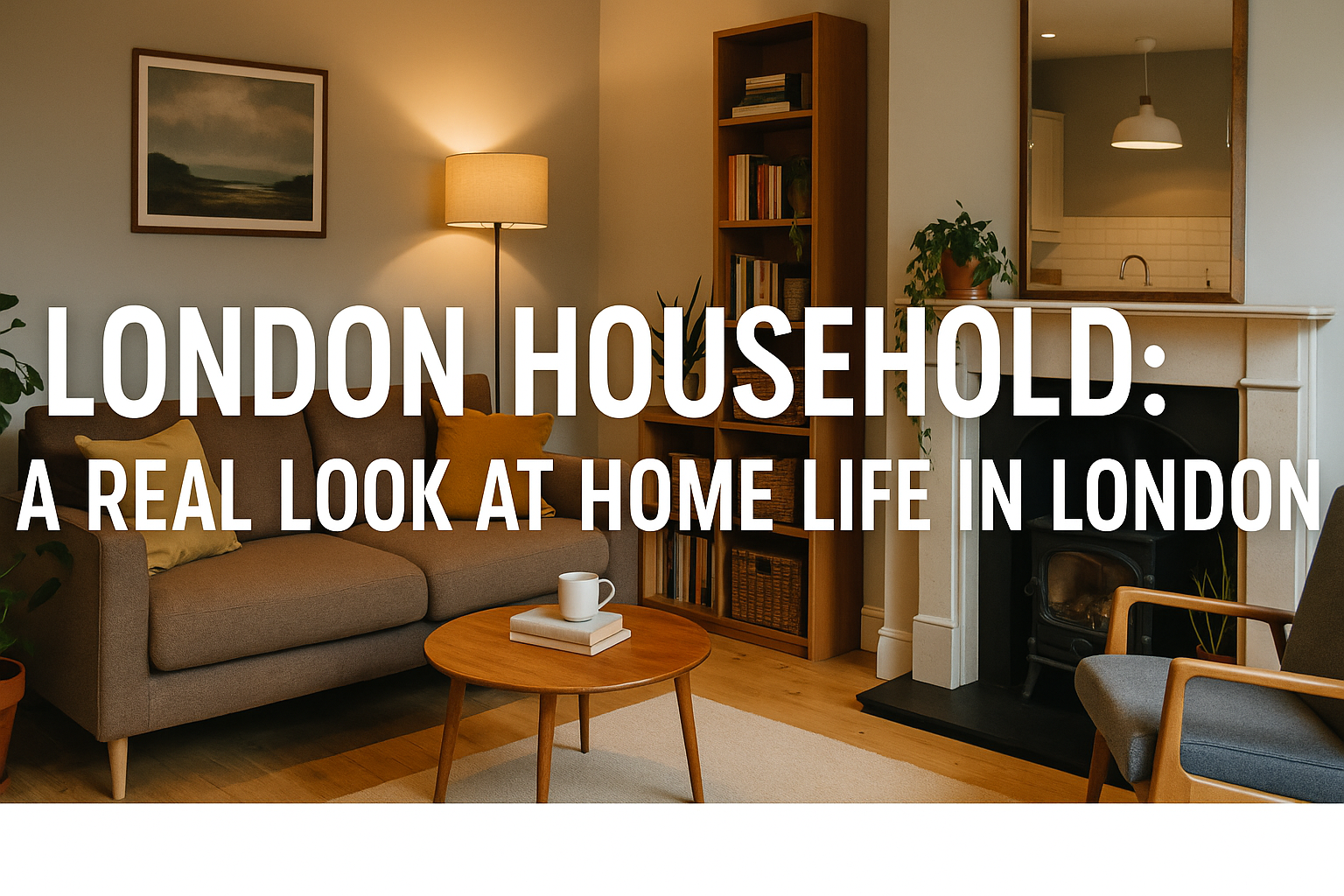London is more than a capital. It brings people, ideas, and customs together. Behind busy streets, real life takes shape. Every home in the city shows a different way of living. Each one holds a daily rhythm that feels personal.
Some houses are new. Others have stood for many years. Some homes belong to families. Others are shared by strangers. No matter who lives there, each space reflects habits, needs, and care.
This guide walks through the heart of the London home. It explains how people use their space. It shows how households work in a city known for noise and speed. To know London, you must see how people live behind the doors.
How London Homes Stand Out
Homes in London do not follow one rule. Some have one person. Others fit five or more. People rent, own, or share. Many come from other cities or countries.
Space is limited in most homes. People find smart ways to store and move. Tables fold. Beds lift. Shelves reach high. A small room becomes useful with the right layout.
Old and new homes stand next to each other. One flat may have drafty windows. The next may shine with steel and glass. Each needs work in its own way.
Living in London costs more than most places. Rent and bills push people to share. Many move far from the center to save money. This choice changes their travel and their day.
Inside a London Home
Living Room
The living room is where people relax. It may have a sofa, table, and lamp. Some add books or a plant. Others keep it plain. In flats, this room brings people together. In family homes, it becomes a spot to talk or watch TV.
Kitchen
Most kitchens are small. They hold the basics. Ovens, fridges, kettles, and sometimes washing machines fill the space. Meals stay quick during the week. Pasta, toast, and eggs show up often. On weekends, people take time to cook more.
Bedroom
A bedroom offers calm. It is the private part of the home. In shared flats, this room may be the only personal space. A bed, desk, and window can turn it into a quiet spot. A rug, lamp, or photo adds comfort.
Bathroom
Most homes have one bathroom. It holds a sink, toilet, and shower or tub. Shared homes set times to avoid stress. People keep showers short to save on bills. A clean space matters in close homes.
Types of Households
Family Homes
Many London homes hold families. Parents go to work. Children go to school. Each day begins early. Meals happen fast. Weekends bring time to clean, shop, or visit parks.
Some families have deep roots. Others arrived in recent years. Some live with grandparents. These homes feel full. They carry love, duty, and tradition.
Shared Flats
Flatsharing helps people cut costs. Young workers and students often rent one room. They share the rest. Each home runs on rules. People take turns cleaning. They split bills. Some flats feel like home. Others stay quiet and distant.
Living Alone
Living alone gives freedom. It also means full cost and full work. One person handles food, bills, and chores. Some enjoy this quiet. Others miss company. Still, it offers choice and control.
Daily Life in London Homes
Days start early. People eat breakfast, get ready, and leave fast. Buses and trains fill with workers and students. The pace is quick.
Evenings slow down. People come home, cook, and rest. Some watch shows. Others go for walks. Flatmates may talk in the kitchen. Families may eat together. The home becomes a soft space after a hard day.
Weekends change things. People wake later. They clean, shop, or rest. Many visit friends or go outside. Some stay in and read. Homes shift to match the mood.
Shopping and Eating at Home
People shop in many ways. Some use large stores once a week. Others stop at small shops daily. Markets sell fresh items. Online orders keep rising.
Meals reflect the people. One home may cook roast dinners. Another may make spicy stews. London food shows its global roots. Rice, beans, pasta, and bread are staples.
Time shapes meals. Workdays stay short and simple. Weekends allow comfort food. Takeaway fills the gap when energy runs low.
Traditions and Customs
Homes carry tradition. People decorate for holidays. They light candles or prepare special dishes. Some mark Christmas. Others celebrate Eid or Diwali. These moments build connection.
Music, games, and stories shape the mood. A radio show, a board game, or a film brings people together. A quiet book or puzzle also adds peace.
The look of a home matters too. A photo, a vase, or a cushion shows care. These touches turn a flat into a home.
Pets in London Homes
Pets live in many flats and houses. People keep dogs, cats, birds, or fish. A small animal brings joy and calm. Some landlords say no to pets. Renters must ask first.
Walking a dog leads to chats with neighbors. A cat offers quiet company. Even a fish tank adds life to a room. Pets help city life feel less lonely.
Chores and Money
Every home has chores. Dishes pile up. Trash needs to go out. Laundry never ends. Some people follow a list. Others clean when needed. Shared homes do best with clear plans.
Bills matter too. Rent, gas, water, and internet cost a lot. People must budget and plan. Splitting costs keeps things fair. Good habits reduce stress.
Conclusion
A home in London holds more than walls. It holds daily life. Behind each door, people find space to rest, cook, and grow. Homes offer peace in a busy city.
Each household moves at its own pace. Some feel full of energy. Others stay quiet. Some homes hold laughter and family dinners. Others bring silence after a long day. No two homes are the same, yet each one shows a real side of London life.
London never stops. The streets stay full. The trains stay packed. But inside, homes slow things down. They offer warmth, routine, and safety. People relax, talk, and feel at ease there. A home turns a big city into something close and personal.
To know London, do not stop at its skyline. Do not only see its crowds. Look deeper. Step into its homes. There, you will see truth, care, and the heart of real life.
Some people even turn a spare room into a space of their own. Man cave decor ideas help make that dream feel real.




